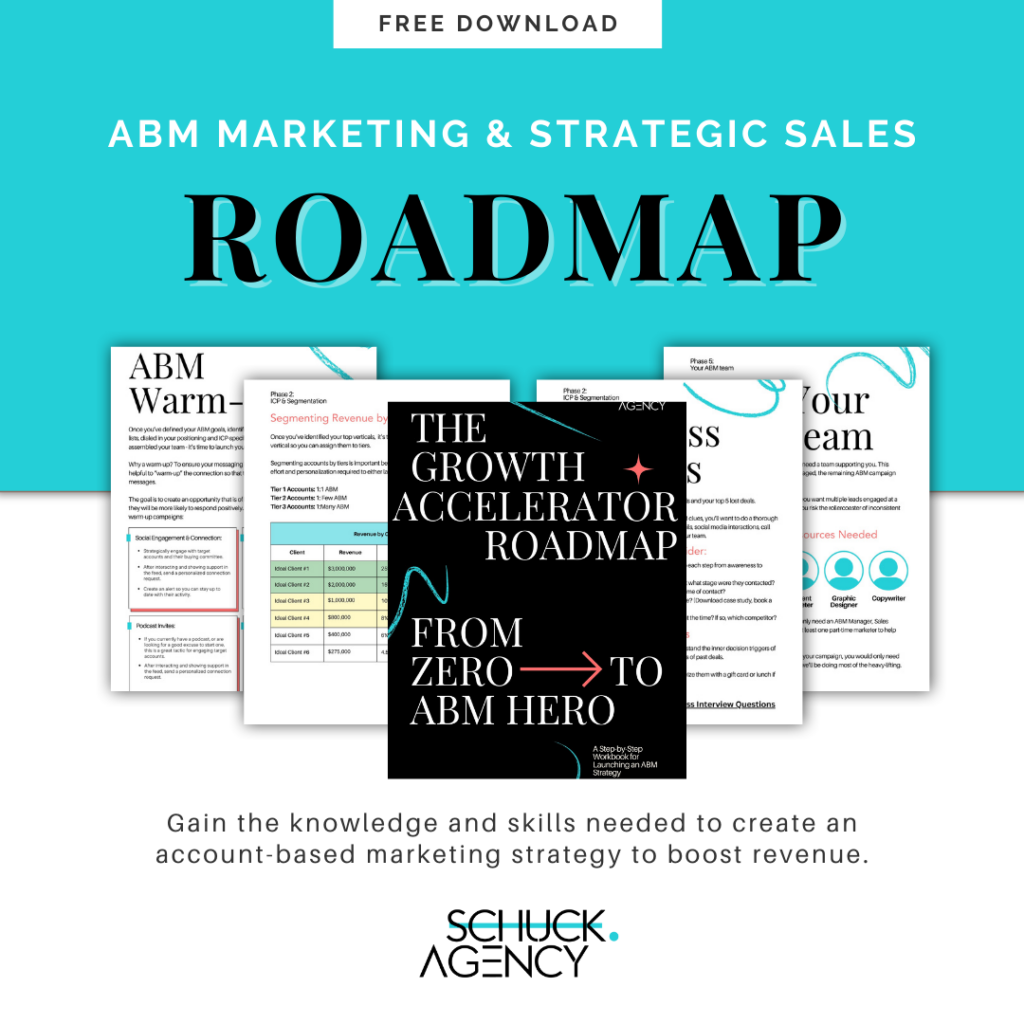If you’re the founder of a B2B professional services company and not leveraging Account-Based Marketing (ABM), you’re leaving serious revenue on the table.
ABM allows you to focus your efforts on high-value accounts with personalized, targeted marketing that builds trust—something that’s crucial in professional services.
You’ll see a significantly higher ROI by aligning your sales and marketing teams and concentrating resources on the accounts that matter most. In fact, 76% of marketers report better returns with ABM.
So, if growth is your goal, ABM isn’t just an option—it’s a necessity. In this article, we’ll highlight the benefits of ABM for professional services, provide a step-by-step guide for implementing an ABM strategy, and then review a case study of a professional services company that was able to 6X their revenue in just seven months.
Benefits of ABM for Professional Services Companies

Personalized Approach: ABM allows for highly targeted, personalized marketing efforts tailored to specific high-value accounts. Personalization is particularly effective for professional services firms where relationships and trust are crucial.
Improved ROI: By focusing resources on the most promising accounts, professional services firms can achieve a higher return on their marketing investments. 76% of marketers report higher ROI with ABM compared to other marketing strategies
Better Alignment: ABM fosters closer collaboration between marketing and sales teams, which is essential in the complex B2B sales environment of professional services
Longer Client Relationships: The focused nature of ABM helps in nurturing and expanding existing client relationships, leading to increased customer lifetime value
Enhanced Reputation: 84% of companies report an improved reputation after implementing ABM, which is crucial for professional services firms relying on their expertise and credibility
Larger Deal Sizes: 58% of B2B marketers report increased deal sizes with ABM, which is particularly beneficial for professional services firms looking to secure high-value contracts
Step-by-Step Guide to Getting Started with ABM

- Assess ABM Maturity:
- Conduct a diagnostic assessment of your current marketing strategies
- Evaluate your team’s readiness for ABM implementation
- Define Target Accounts:
- Identify high-value accounts that align with your ideal client profile
- Prioritize accounts based on potential revenue and strategic importance
- Develop Account Insights:
- Research target accounts thoroughly
- Understand their pain points, challenges, and business objectives
- Create Personalized Content:
- Develop tailored content that addresses the specific needs of target accounts
- Ensure content demonstrates your expertise and value proposition
- Align Sales and Marketing:
- Establish clear communication channels between sales and marketing teams
- Define roles and responsibilities for account engagement
- Choose ABM Technology:
- Select appropriate ABM tools (e.g., Demandbase, 6sense, or Terminus)
- Integrate with existing CRM and marketing automation systems
- Implement Multi-Channel Engagement:
- Develop a coordinated strategy across various channels (email, social media, events)
- Ensure consistent messaging across all touchpoints
- Set Up Measurement Framework:
- Define key performance indicators (KPIs) for ABM success
- Implement tools to track account engagement and pipeline progress
- Launch Pilot Campaign:
- Start with a small set of target accounts
- Test and refine your approach based on initial results
- Scale and Optimize:
- Gradually expand your ABM program to more accounts
- Continuously analyze results and adjust strategies for improvement
Case Study: Payscale’s Successful ABM Campaign

Payscale, a professional services company specializing in compensation data and software, implemented an ABM strategy to accelerate its marketing efforts and overall growth.
Key Elements of Their ABM Approach:
- Focused on high-value target accounts
- Developed personalized content and messaging
- Utilized multi-channel engagement strategies
Results:
- 500% increase in target account traffic within seven months
- 6x increase in revenue ROI
- Significant improvement in sales and marketing alignment
- Enhanced ability to engage C-level executives in target accounts
PayScale’s successful implementation of Account-Based Marketing is a compelling example of ABM’s potential in the professional services sector. By meticulously selecting target accounts, crafting persona-based messaging, and leveraging multi-channel engagement strategies, PayScale achieved remarkable results.
Their use of personalized ad campaigns, tailored to specific decision-maker personas and use cases, proved particularly effective. Coupled with strong sales and marketing alignment and the strategic use of ABM technology, PayScale saw a 500% increase in target account traffic and a 45% decrease in time to close for active opportunities.
Most impressively, they achieved a 6x return on investment in revenue within just seven months. This case study underscores the power of a well-executed ABM strategy in driving engagement, accelerating sales cycles, and significantly boosting revenue for B2B professional services firms.
Curious About Starting Your Own ABM Strategy?

Download our Growth Accelerator Roadmap
You’ll learn the best practices, how to troubleshoot poor performance, and the key factors that contribute to ABM fit and readiness.






